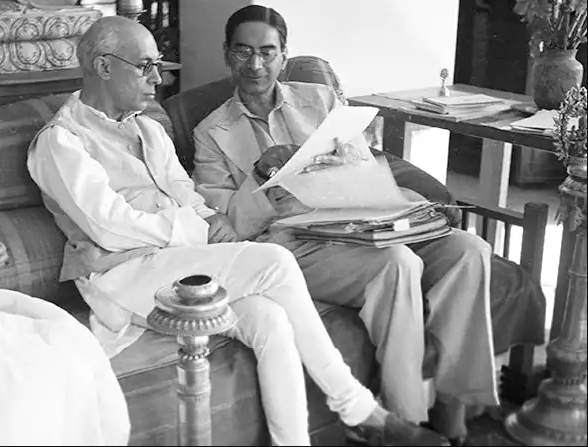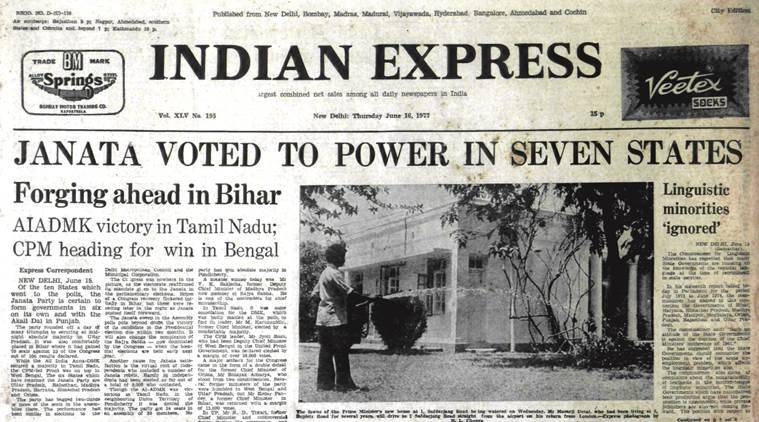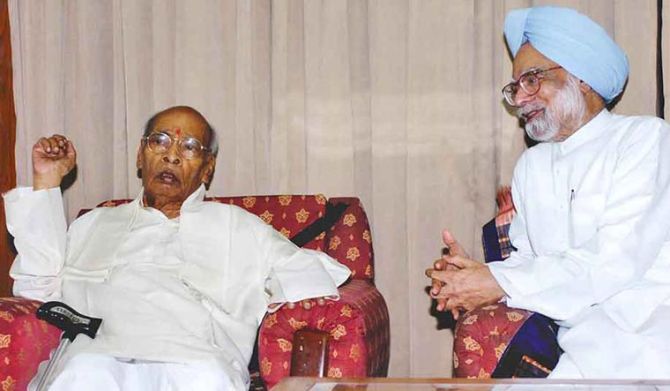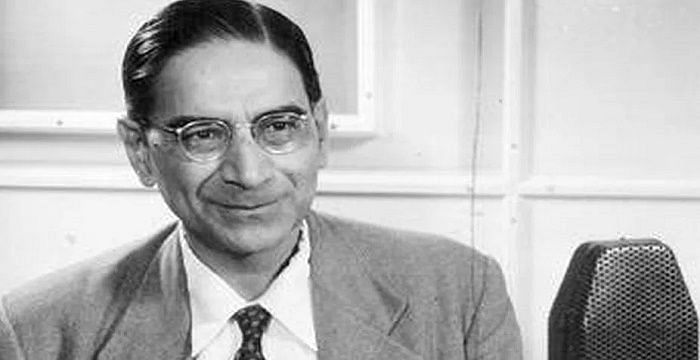Since 1956, Three Major Strategies (Economic Planning) Have Been Adopted. The second planning (five-year planning) was based on the Nehru-Mahanobis Model of growth. In this section, we will learn about all three planning strategies in the Indian Economy. Since the start of the second plan, India has pursued three primary strategies:
- Nehru-Mahalanobis Model of Growth
- Gandhian Model of Growth
- Rao-Manmohan Model of Growth
Nehru-Mahalanobis Model of Growth
When the Second Five Year Plan was being formulated, Prof. P.C. Mahalanobis, a friend, and adviser to the late Prime Minister Jawaharlal Nehru and a former member of the Planning Commission, developed a growth model demonstrating how to achieve a rapid long-term rate of growth. It would be necessary to commit a significant portion of the investment budget to the development of basic heavy industries.
This model colloquially referred to as the Nehru-Mahalanobis Model, served as the foundation for the second plan. This paradigm remained the primary strategy for the various programs until 1977 when the Janta Party Government introduced the Gandhian Model. The heavy industrial model’s defining characteristics were as follows:

The plan emphasized the rapid development of heavy industry in order to establish an industrial base for the economy and also to increase its self-sufficiency in the weapons and capital goods sectors. The second strategy, which explained the reason for the heavy goods approach, said the following:
“In the long run, the rate of industrialization and the expansion of the national economy will be determined by the expanding output of coal, power, iron and steel, heavy machinery, heavy chemicals, and heavy industries in general, all of which will boost capital formation capacity.
One critical objective is to wean India off foreign imports of producer products as rapidly as feasible so that capital accumulation is not delayed by difficulty procuring supplies of vital producer goods from other countries. As a result, the heavy industry must be expanded as quickly as possible.” The planning commission Provided the basis for the second five-year plan.
British authority purposefully stifled heavy industry development and maintained India’s predominantly rural economy as an appendage of the British Colonial Empire. India’s industrial structure was based on a narrow foundation of consumer products sectors. This basis needed to be expanded through the growth of heavy industries and infrastructure. It was argued that a diverse industrial structure might absorb a wide population of labor and increase labor productivity. This would also alleviate the excessive population’s reliance on agriculture for subsistence.
Due to the fact that industry has higher labor productivity than agriculture, an industrialized economy promised to result in a quick growth in national and per capita income. Rapid industrialization was necessary not only for agriculture’s development but for the development of all other sectors of the economy as well.
The public and private sectors’ roles
Because the private sector was unlikely to participate in heavy industry projects with a long gestation time but poor profitability, the government assigned this obligation to the public sector. The government envisioned the public sector as a growth engine, propelling the establishment and expansion of heavy industries and infrastructure. The private sector played a complementary role to the state sector in developing consumer goods production and other areas where public investment was not directed.
Foreign aid plays a role in development
While the Mahalanobis model acknowledged that foreign aid promotes the expansion of capital goods and infrastructure sectors, it underlined the fact that the majority of the cost of development must be borne by local savers. Given that foreign aid will mostly take the form of loans, it is critical to focus on export growth in order to offset the majority of imports.
The role of minor industries
The Nehru Mahalanobis model recognized that enormous investments, while necessary in the heavy industry sector, would not result in significant job growth due to their capital-intensive nature. To stimulate consumer goods production and employment, it would be important to invest in small businesses. The planners assert unequivocally, “The litmus test of a country’s industrialization progress is a heavy industry, not the little enterprises that may be established.” This is not to say that small businesses should be overlooked. They are critical for production and employment in and of themselves.
Agriculture’s part in development
The Nehru Mahalanobis model recognized agriculture’s critical role in the development process. Recognizing agriculture’s critical significance, Nehru stated, “We shall discover that industrial progress cannot be attained without agricultural advancement and progress.” Everyone understands that we cannot advance in the industry unless we are self-sufficient in agriculture. If we are forced to import food, we are doomed in terms of advancement. We are unable to import food and machinery at the same time.”
The following are the major achievements of the strategy implemented throughout the first six plans, albeit only during the Janta Party’s brief two-year tenure (1977-78 to 1979-90):
- The capital goods sector has expanded dramatically as a result of the heavy industry paradigm. The sixth draught plan of the Janta Party government recognized this success as follows: “It is a legitimate source of national pride that a stagnating and dependent economy has been modernized and made more self-reliant during this period.” (Planning Commission, 1978-83 Draft Five-Year Plan)
- Economic infrastructure was vastly expanded in terms of irrigation, energy, transportation, and communication, among other things.
- The social infrastructure expanded in the shape of schools, colleges, universities, basic health centers, dispensaries, and hospitals.
- The country has seen a gradual increase in savings and investment rates.
However, significant problems were discovered during the implementation phase.
- Exports failing to increase in lockstep with increases in imports (required by the expansion of the capital goods industry) resulted in the persistence of a trade deficit, which grew in scale with each consecutive plan.
- While agriculture made improvements, with such a limited agricultural budget, the progress could not be regarded as satisfactory. The model’s development was primarily reliant on capital goods imports. As a result, it adopted a capital-intensive development strategy. As a result, small businesses and industries providing consumer items have been mostly ignored. Thus, the heavy industrial paradigm exacerbated balance of payment problems while failing to absorb fast-rising workers. This resulted in an insufficient increase in unemployment.
- The expansion of the public sector resulted in the emergence of a high-cost economy that placed a far lower premium on efficiency. Both the central government’s and state government’s activities, such as state electricity boards, road transport undertakings, and irrigation works, incurred losses year after year, and the state exchequer was expected to cover these losses from the government’s general tax receipts.
Gandhian Model of Growth
The Janta Party’s draught five-year plan (1978-82) identified several flaws with the Nehru Mahalanobis model: Despite four decades of planning, the model failed to establish a nationwide minimum standard of living. Nearly 40% of the people lived in poverty. Unemployment and underemployment remained high and rose with each consecutive plan. Income and wealth disparities between rural and urban areas had widened.

The country was unable to overcome food grain and consumer goods shortages and suffered from inflationary pressure. The Janta Party highlighted Gandhi’s model of development. The model highlighted agriculture’s and small industry’s rapid development. Village and small industries were encouraged from both a production and employment standpoint. The model needed the following modifications to the planning process:
- Employment-based planning to take the place of production-based planning: By overemphasising a capital-intensive pattern of development, the Nehru model failed to generate sufficient employment. However, unemployment and underemployment are at the heart of the poverty and inequality crises.
There is an urgent need to demarcate locations with high employment potential and to drive investment toward them, so that investment becomes employment oriented and the economy enhances its labour absorption capacity.
- The emphasis is on agricultural development as a means of expanding employment: Charan Singh, an ardent champion of the Gandhian model, brought to light the harsh reality that, whereas India employed only 30 people per 100 acres in 1971, Japan, South Korea, and Egypt employed between 87 and 71 workers per 100 acres. If intensive farming is implemented, India can add 50 to 60 million jobs in agriculture alone. As a result, agricultural growth must be viewed as the cornerstone of the development process.
The history of development in Punjab and Haryana also corroborates the assumption that these states are capable of achieving high growth rates through agricultural development, thereby significantly reducing poverty and unemployment.
- The Gandhian model placed a premium on small industries over large ones, emphasising that no medium or large-scale firms should be allowed to exist in the future that provide goods or services that can be produced by cottage or small-scale enterprises. The primary objective of continuing this path was to increase employment and to establish a decentralised pattern of production that would result in a reduction in regional income and wealth disparities.
- The Gandhian model recognised the necessity for the development of heavy and basic industries and entrusted this responsibility to the public sector.
Gandhi’s model sought to address the issue of income distribution at the point of production, rather than at the point of consumption through fiscal measures. It did place a premium on employment as the primary means of ensuring a national minimum and eradicating poverty.
Rao-Manmohan Model of Development
In 1991, the Rao-Manmohan Model of Development was introduced. It placed a premium on privatisation and economic globalisation. To begin, previously reserved regions for the public sector were to be made available to the private sector. Although the government was unable to privatise public sector enterprises due to significant opposition from workers and leftist parties, it liberated the economy and opened sections of heavy industry and economic infrastructure to the private sector, both domestic and international.

Second, the government eliminated licencing in all industries save for a select group of ten. In other terms, it liberated investment from bureaucratic constraints. Thirdly, it removes the asset ceiling on MRTO firms. This meant that even large businesses were permitted to invest without regard for the Monopoly and Restrictive Trade Practices Commission’s investment ceiling. Clearly, the government prioritises expansion over monopolistic control. Fourthly, the facilitation of foreign direct investment was accomplished. Autonomy for direct foreign investment approvals.
This was accomplished through the development of a Memorandum of Understanding and the professionalisation of PSU management and boards. Finally, in order to globalise the economy, the government pursued a dual policy of lowering import barriers and increasing export development. Such courses would facilitate the free flow of international capital and technology, thereby contributing to our economy’s modernization.
Rao-Manmohan Additionally, the development model has come under fire. The primary criticisms are as follows:
- Agriculture and agro-based industries, which generate the majority of jobs, were excluded from the model.
- The model has a relatively restricted focus, as it emphasises growth in the corporate sector, which accounts for less than 10% of GDP.
- Although the 1991 industrial policy stated that multinational corporations should be permitted in high-priority areas, the government has permitted them in a broad range of industries, including consumer goods. It should be underlined that MNCs adopt a very capital-intensive mode of production, which has stifled employment growth.
- After entering different joint ventures, MNCs increase their stake to 51 percent or even more, thereby displacing Indian partners. This has resulted in the Indian sector requesting protection from the multinationals’ attack.
Following their entry into numerous joint ventures, MNCs increase their stake to at least 51 percent, if not more, therefore displacing the Indian partner. This has resulted in the Indian sector requesting protection from the multinationals’ attack. To summarise, the Rao-Manmohan strategy succeeded in terms of growth by bringing the GDP growth rate beyond 6%, but failed in terms of equity, employment, and poverty eradication.
Reconciliation of the Models of Development
The three models of development have been designed to handle the issues of growth, employment, poverty eradication, and self-sufficiency by emphasising a method appropriate for each stage of development. The Nehru-Mahalanobis approach was successful in building the groundwork for India’s industrialization. Gandhi’s concept emphasised the importance of balancing output and employment objectives.
The Rao-Manmohan Model stressed the importance of the private sector – both domestic and international – in the growth process. As a result, it placed a premium on privatisation, liberalisation, and globalisation. However, in the end, the level of development of a society must be quantified using three characteristics.
- The effect of development on poverty eradication
- the effect on employment and
- the effect of eradicating inequities and ensuring social fairness. Societies must balance their goals in order to ensure long-term growth, employment, and equity. In the short term, alternative options may exist.

